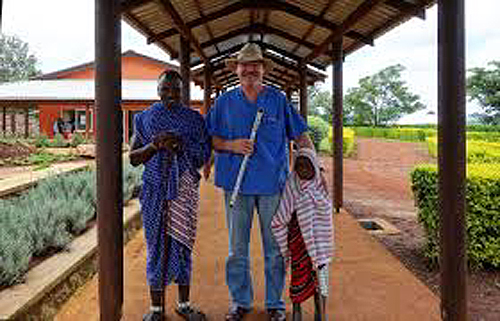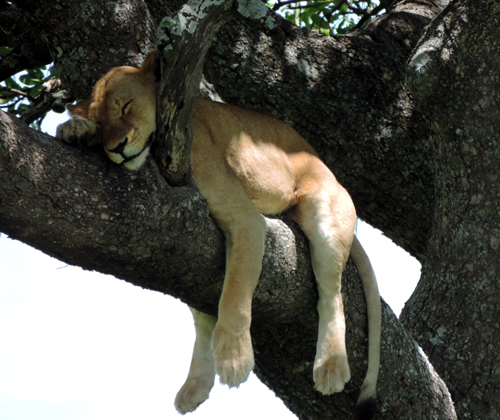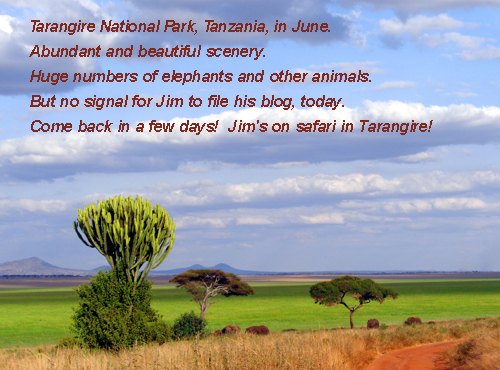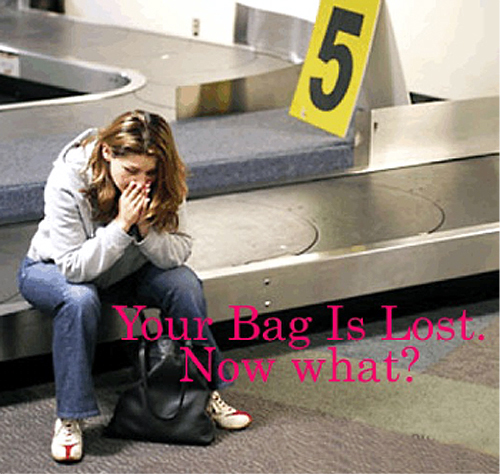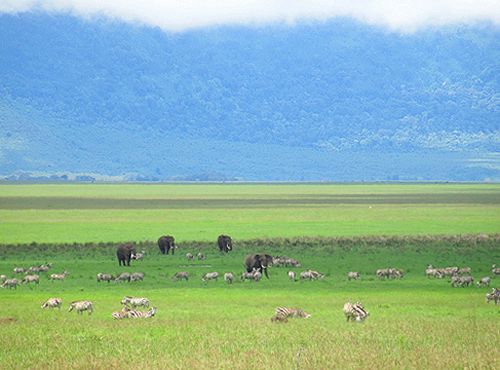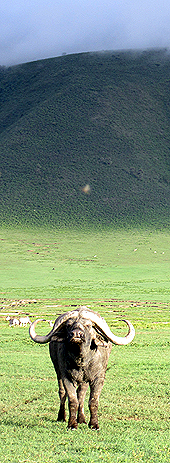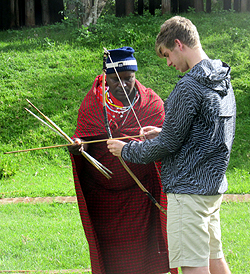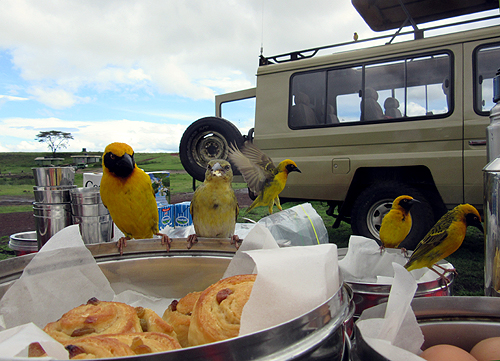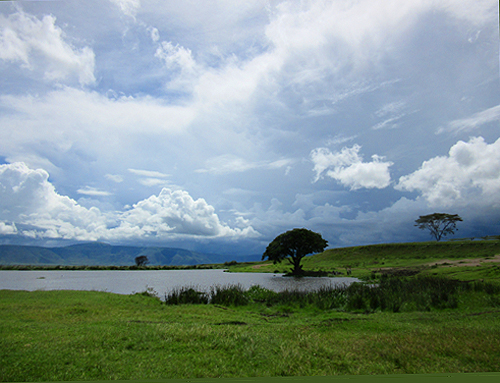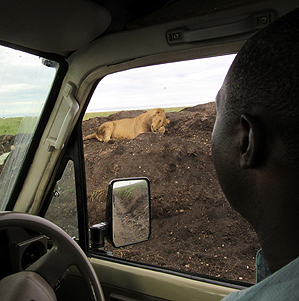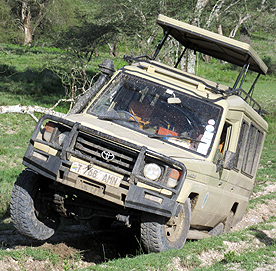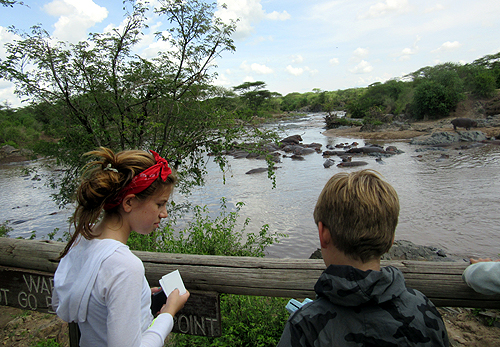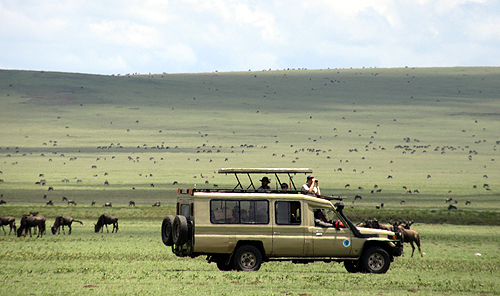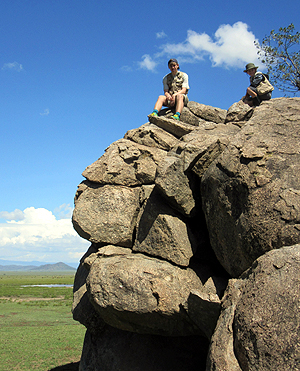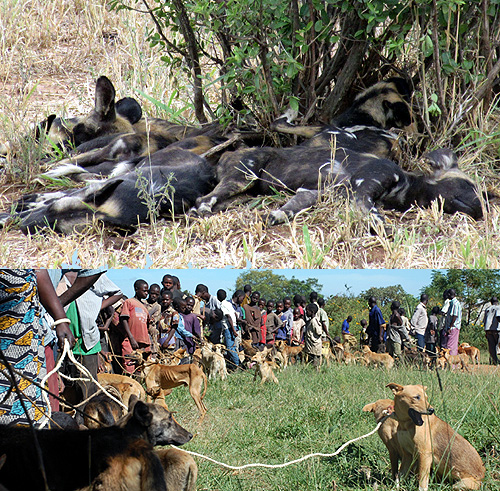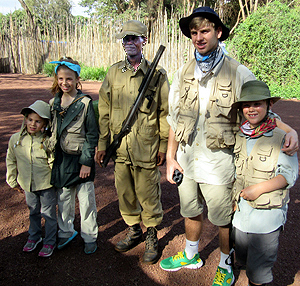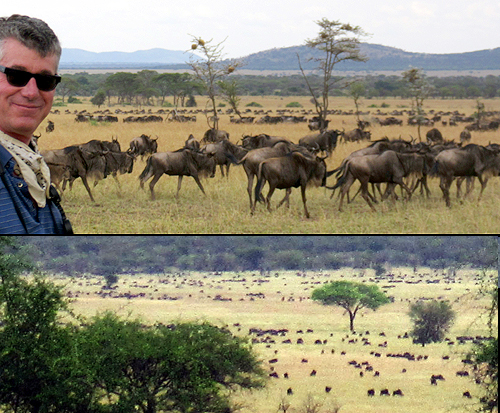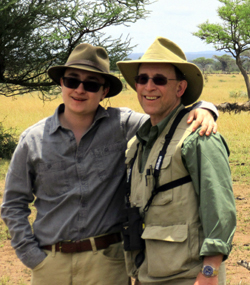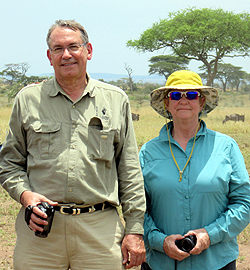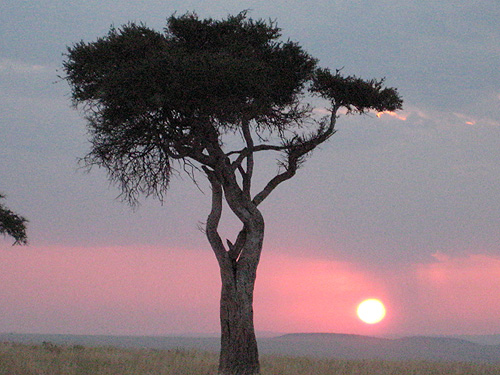 Why spend the time and money to travel north on a Tanzanian safari to the very border of Kenya, and then not cross?
Why spend the time and money to travel north on a Tanzanian safari to the very border of Kenya, and then not cross?
I ended my extremely successful McGrath Family Safari game driving along the great Mara and Sand Rivers, seeing really giant crocs, looking longingly to Kenya. You aren’t allowed to cross over.
Ever since the 1979 dispute between the two countries closed the border, numerous attempts by good politicians on both sides have tried to reopen it to no avail.
Oprah stood where my family had lunch yesterday, peeved to smithereens that she wasn’t allowed to cross a few years ago.
Nobody can. Not even the politicians themselves.
The dispute is now so old that recounting its history is like critiquing a marble statue: Interesting, but it’s not going to change.
We had great game viewing these last two days, including a family of 12 lion in a weeded kopjes, elephant playing along the river, giraffe starting at us as we bumped and hurdled ourselves over really bad roads, and to everyone’s glee, 5 baby rock hyrax popping out of a rock design placed at the edge of our camp’s swimming pool.
But it’s a long … and expensive journey to get here. Obviously we aren’t unusual, because the camp we stayed in, Asilia’s Sayari, is expanding (now 15 tents) and is one of the most expensive and luxurious camps in Tanzania.
The southern (Tanzanian) side of the rivers that make up some of the border with Kenya are filled with camps. We encountered almost as many game viewing vehicles as we did in Tarangire. So clearly, we’re not alone.
The attraction is the allure of the migration. Read my last blog to see how crazy this is! Yet we are all driven by history, and in fact the chances today of seeing the great herds in Tanzania are definitely chances that on every day of the calendar are moving northwards.
But more correctly – and this is my own experience – they aren’t moving as much. It’s wetter, so more grass, and areas previously dust bowls at certain times of the year in Tanzania are no longer.
Personally, I love the Mara. In Kenya it’s called the Maasai Mara. Here it’s called the Mara District. But it’s the Mara, absolutely one of the most beautiful places on earth.
It’s cold at night like Seronera, but it never gets really hot during the day even with clear skies. It rains almost every day of the year except in October and November, which I love because it’s not the least disruptive (it never rains for long) and it’s dramatic and turns the veld into a bouquet.
(P.S. The animals like it, too.)
There are woodlands, but they aren’t as dense as further south, so you can reach a rise in a hill and have vistas that stretch for dozens if not hundreds of miles. It’s a lush carpet of greens: the shining reflective green of grasses and the deep dark fur greens of the trees and few woodlands.
And, of course, the rivers. We spent most of our time up here along the Mara River. It’s a raging, but not very deep river, bubbling over lots of big rocks producing white water and little cascading waterfalls everywhere you look.
Also everywhere you look are hippos, uncountable there are so many, and some of the world’s largest crocodiles. I think the biggest one we saw was probably 14 feet, but I have seen them twice that size!
The birdlife is exceptional. First of all, things are easier to see when the woodlands are thinned out. So, for example, we saw numerous klipspringer, steinbok and reedbuck, and even an oribi! These aren’t rare animals, just difficult to find because of their size, color and stealth.
The same is true for birds. So within a half hour we saw a hoopoe, a pygmy falcon and the pink-eyelidded Verreaux’s Eagle Owl!
But it’s not all good news. Tanzania – at least up here – pays a lot less attention to its wildernesses than Kenya. So there are many, many more tse-tse. There are many fewer tracks that we can use. And most of all …
… Tanzania does not allow off-road driving as the Kenyans do in the Mara. That’s critical. The official Tanzanian position is that it damages the ecosystem, and there is some truth to that.
But it’s a little truth, and the real truth has to do with Tanzanian corruption and lack of resources dedicated to tourist parks. So as Kenya calms down (the British removed their travel warnings on the Kenyan coast last week) I think that I and most of my colleagues will choose to travel to Kenya to see the Mara rather than here.
But the McGraths and all the others we met here this time made absolutely the right decision. The southern Serengeti remains my favorite place, but … the Mara is a close second!
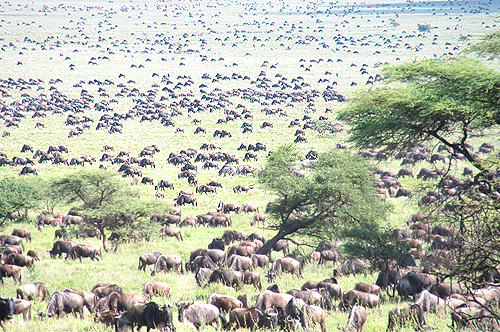 The greatest wildlife spectacle on earth has become unpredictable because of climate change, as awesome as it remains.
The greatest wildlife spectacle on earth has become unpredictable because of climate change, as awesome as it remains.

